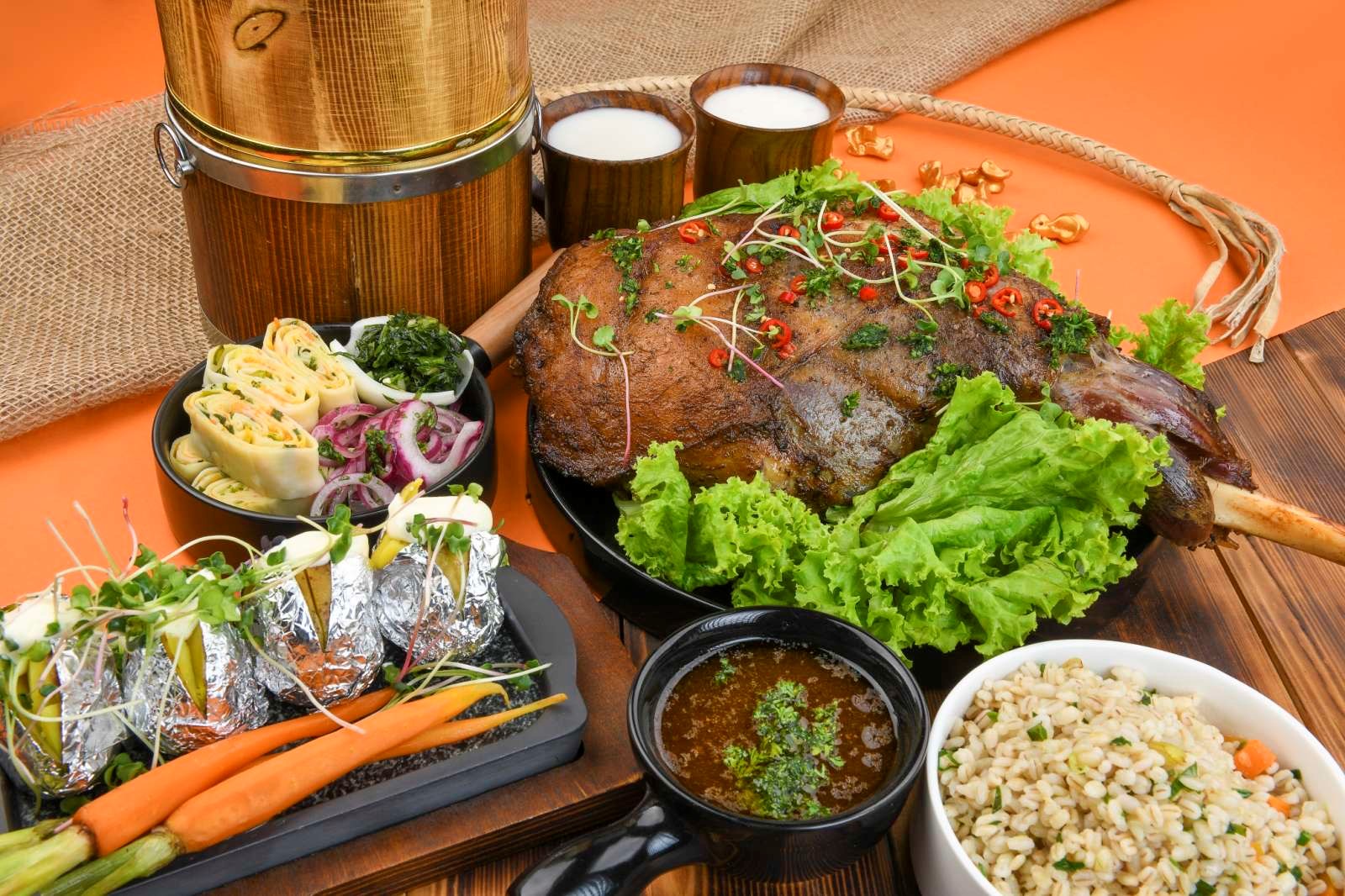Mongolia, a land characterized by vast steppes, rugged mountains, and nomadic traditions, boasts a culinary heritage as rich and diverse as its landscapes. From hearty meat dishes cooked over open flames to dairy products crafted with ancestral techniques, Mongolian cuisine offers a fascinating glimpse into the country’s cultural tapestry.

Nomadic Roots: Influences and Traditions
Mongolian cuisine reflects the nomadic lifestyle ingrained in the nation’s history. The harsh climate and nomadic way of life have shaped the culinary traditions, emphasizing simplicity, practicality, and sustainability. Dairy products, meats, and grains form the cornerstone of Mongolian cooking, reflecting the necessities of a people who have historically depended on their herds for sustenance.
Buuz: Dumplings of Delight
One cannot delve into Mongolian cuisine without encountering Buuz, savory dumplings filled with minced meat, typically mutton or beef, and seasoned with garlic, onion, and various spices. These delectable parcels are then steamed or boiled, resulting in a tender exterior encasing a flavorful filling. Buuz are often enjoyed during festive occasions and celebrations, symbolizing prosperity and abundance.
Khuushuur: Crispy Delights from the Steppe
Another beloved dish is Khuushuur, fried pockets of dough filled with minced meat, onions, and sometimes vegetables. These savory turnovers are a staple of Mongolian cuisine, offering a satisfying crunch with every bite. Khuushuur are commonly consumed during Naadam, Mongolia’s annual festival celebrating the three manly sports of wrestling, horse racing, and archery.
Tsuivan: Noodle Nirvana
Tsuivan exemplifies the fusion of simplicity and flavor in Mongolian cooking. This hearty dish features hand-cut noodles stir-fried with tender strips of meat, typically beef or mutton, along with assorted vegetables such as carrots, onions, and cabbage. Tsuivan is seasoned with soy sauce and various spices, imparting a tantalizing aroma and taste that captivate the senses.
Aaruul: Tangy Treats from the Pasture
Aaruul, traditional Mongolian cheese curds, offer a unique culinary experience. Prepared by fermenting sour milk and pressing it into small, dense shapes, Aaruul serves as a portable snack for nomadic herders traversing the vast Mongolian landscape. With its tangy flavor and chewy texture, Aaruul provides a satisfying source of sustenance during long journeys across the steppes.
Boortsog: Sweet Indulgences
Boortsog, deep-fried dough pastries, occupy a special place in Mongolian cuisine as beloved treats enjoyed on festive occasions and gatherings. These golden-brown delights are made from flour, water, and yeast, resulting in a dough that is kneaded, shaped, and fried to perfection. Boortsog can be enjoyed plain or drizzled with honey for an extra touch of sweetness.
Suutei Tsai: Nourishing Elixirs
No exploration of Mongolian cuisine would be complete without mentioning Suutei Tsai, a traditional tea enjoyed throughout the country. This nourishing elixir consists of brewed green tea mixed with milk, salt, and sometimes butter, creating a rich and savory beverage that warms the body and invigorates the spirit. Suutei Tsai is not only a source of hydration but also a symbol of hospitality and camaraderie in Mongolian culture.
Conclusion: A Taste of Mongolia
In conclusion, Mongolian cuisine offers a captivating journey through the country’s history, traditions, and landscapes. From hearty meat dishes to dairy products crafted with ancestral techniques, each culinary creation tells a story of resilience, resourcefulness, and cultural pride. Whether savoring the savory delights of Buuz and Khuushuur or indulging in the sweet pleasures of Boortsog, exploring Mongolian cuisine is sure to leave a lasting impression on the palate and the soul. So, venture forth and discover the culinary treasures of Mongolia, where every meal is an adventure waiting to be savored.